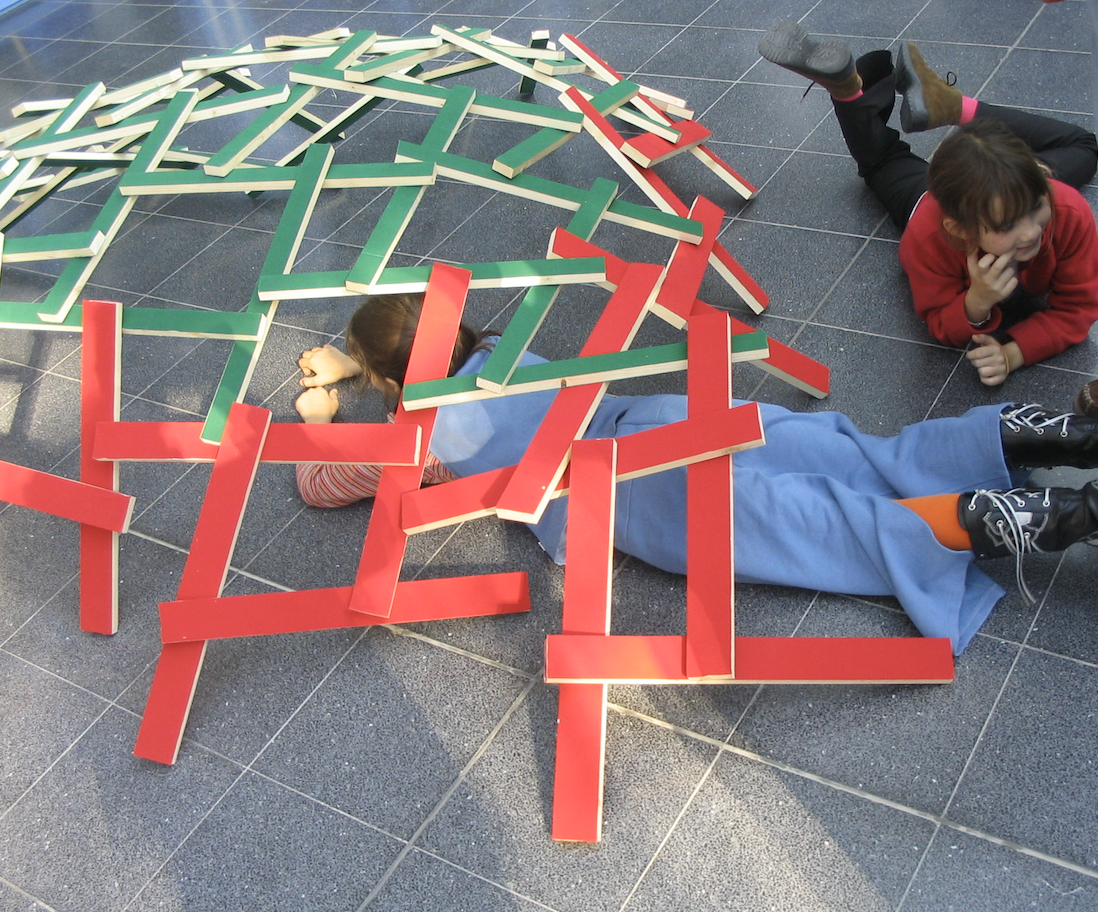
In order to build a bridge or a dome, you will need only beams whose thickness, width and length are in a sensible proportion to each other. ‘Sensible’ is to be understood quite broadly. The construction works for a surprisingly broad range of measures and materials. Here’s a version using only materials which most people have lying around their house anyway. Perhaps you still have some leftover boxes from corrugated cardboard? This type of cardboard is relatively thick (3mm in our example) and easy to cut with a pair of scissors.
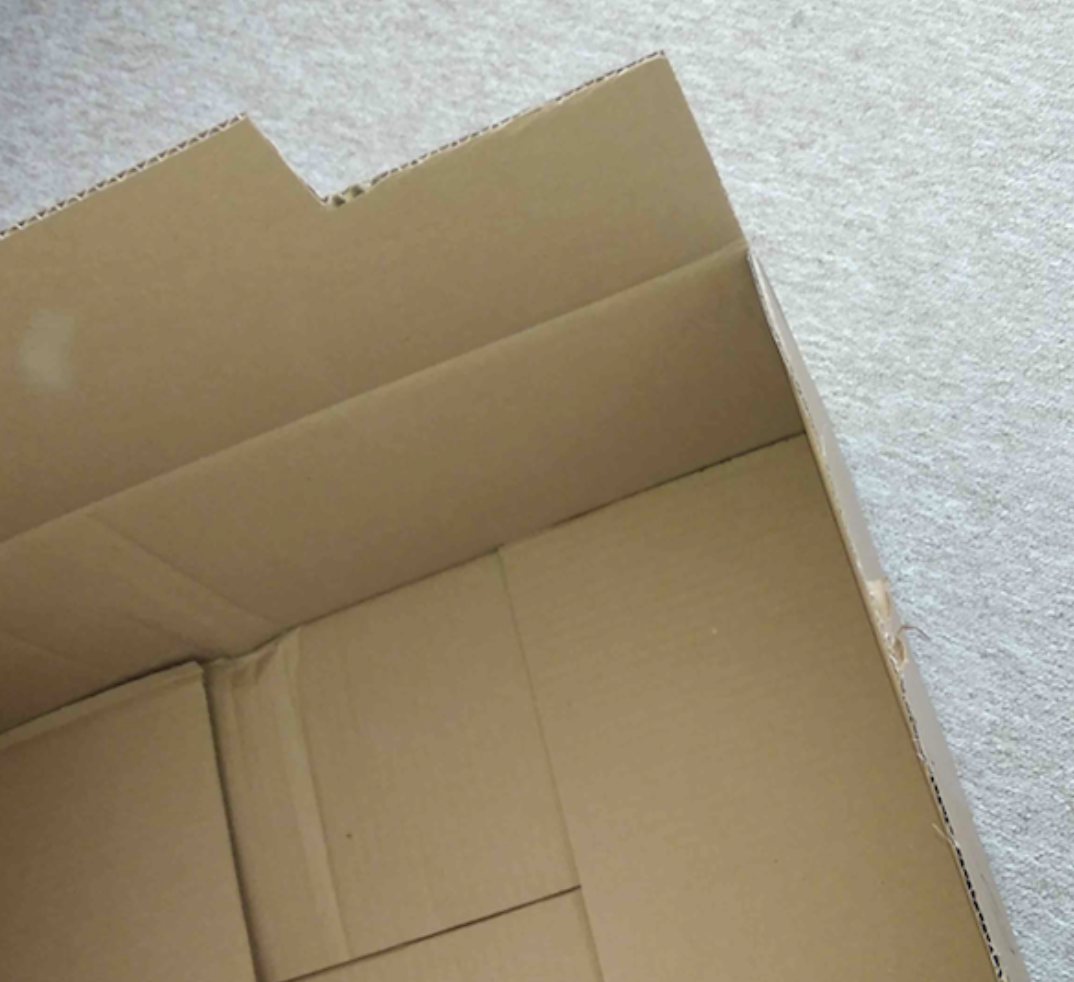
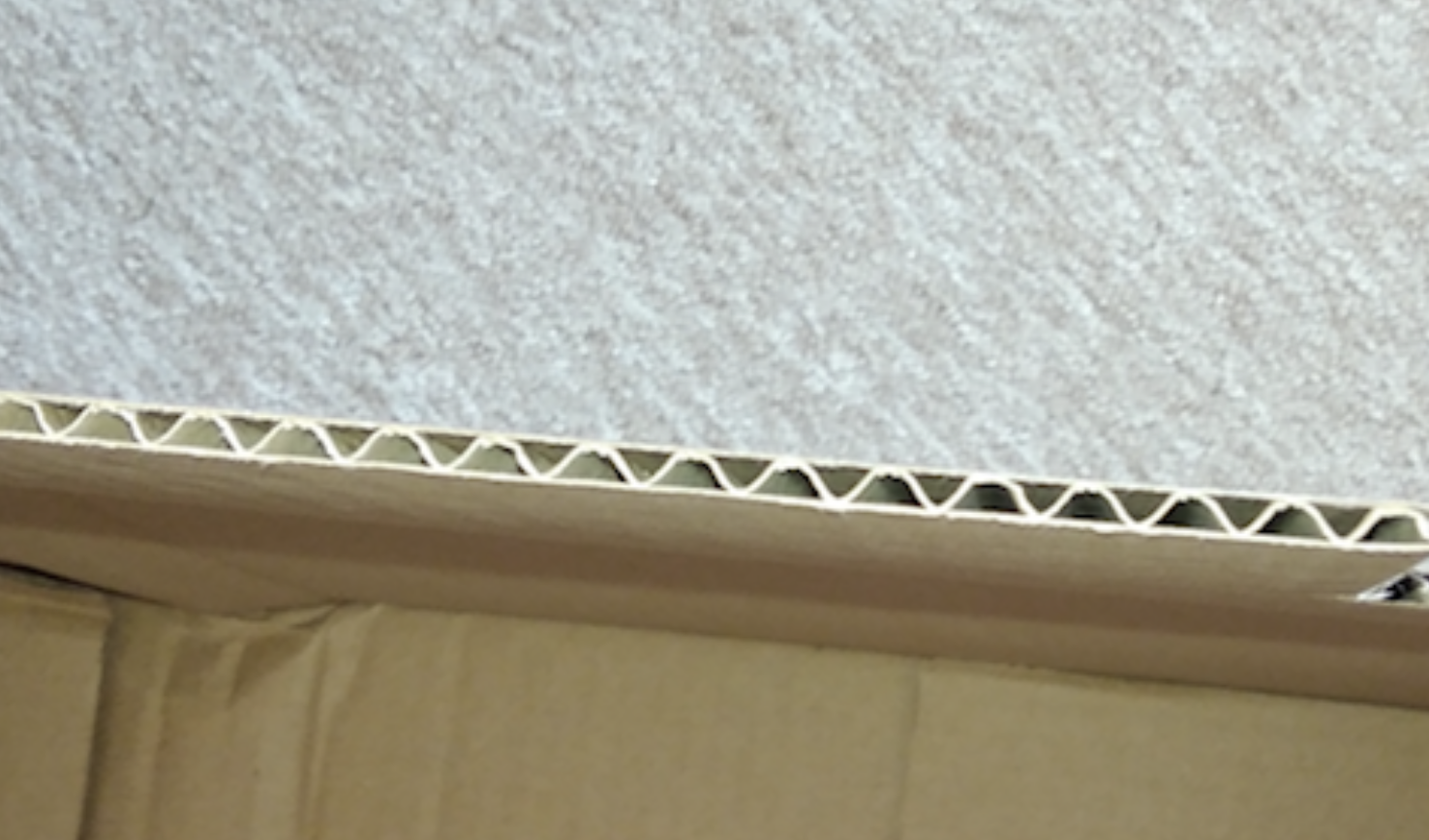
As a rule of thumb, beams around 20cm long and 2cm wide will do the job. If you don’t have much cardboard at your disposal, you can also cut your beams to around 10cm in length and 1cm in width. You don’t need to be super exact about this (it’s no fun when you work with cardboard). It’s better to just cut a few more beams instead.

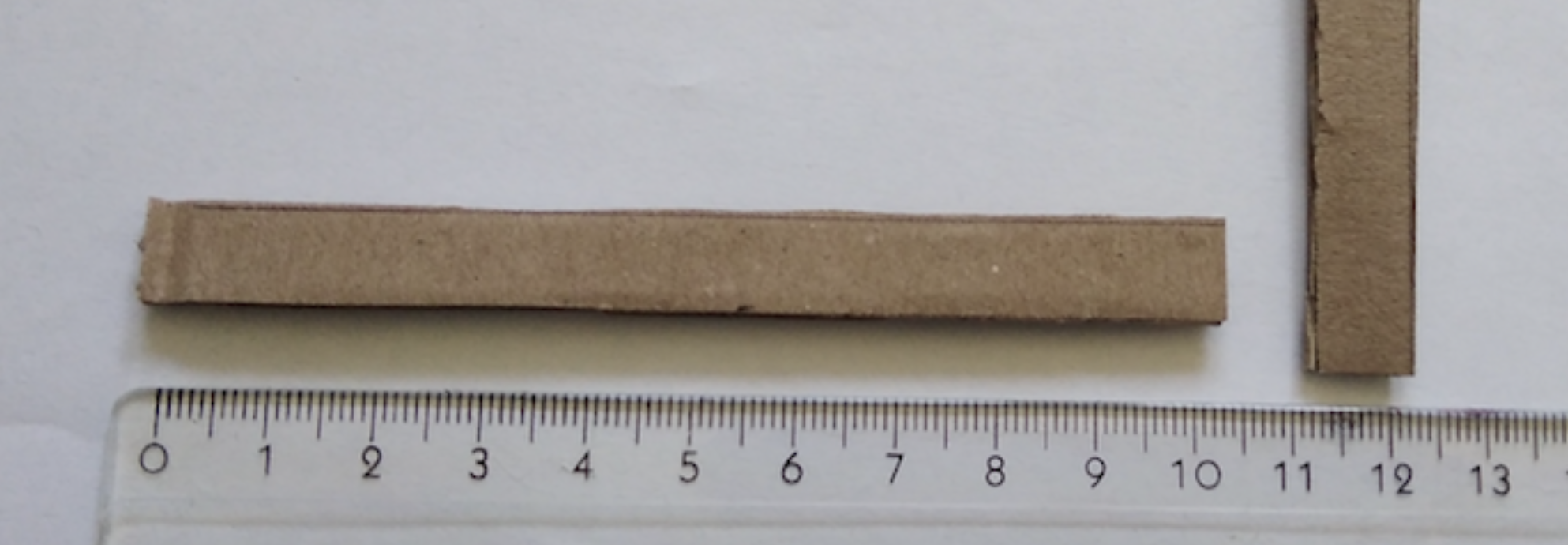
At the end, you should have a small pile of cardboard beams similar to the one below. You can use these beams to build bridges and domes.
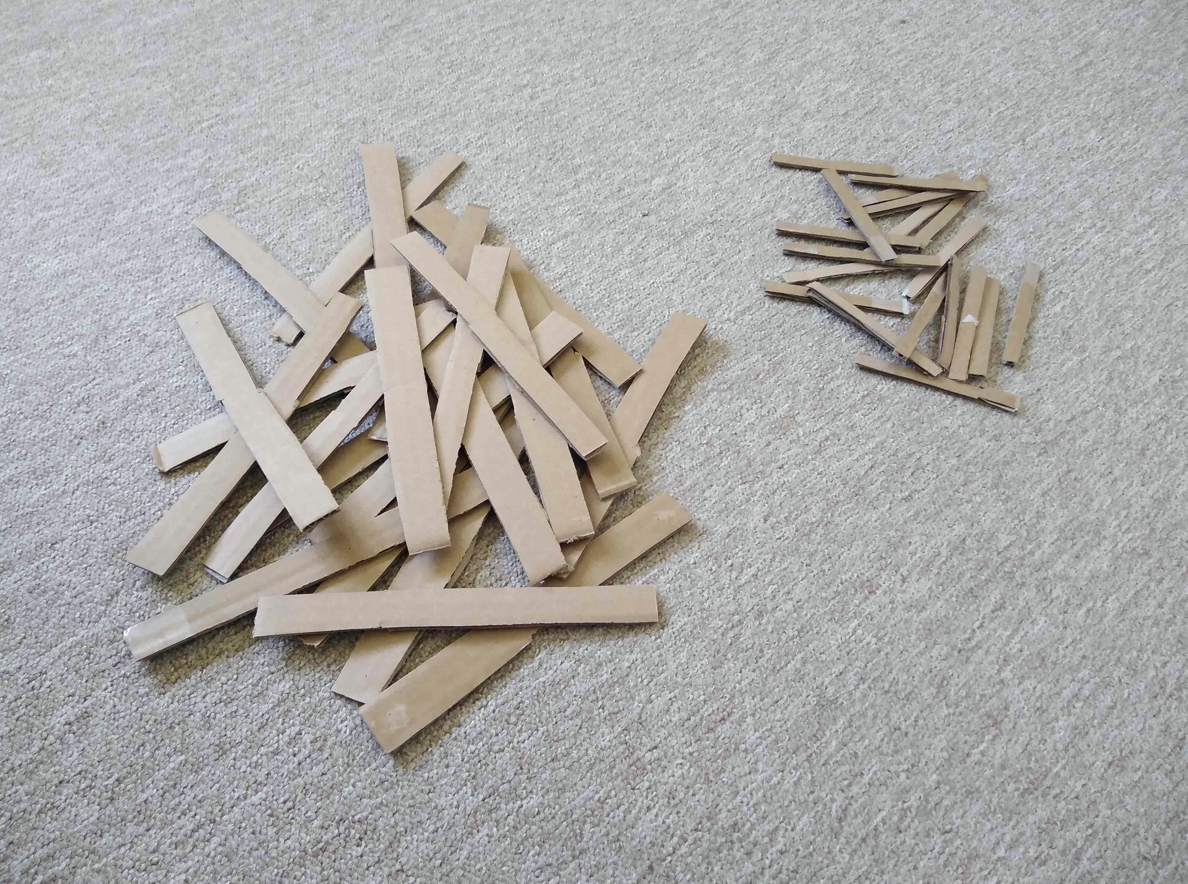

And here are the steps you need to follow to build your bridges and domes.
Bridges
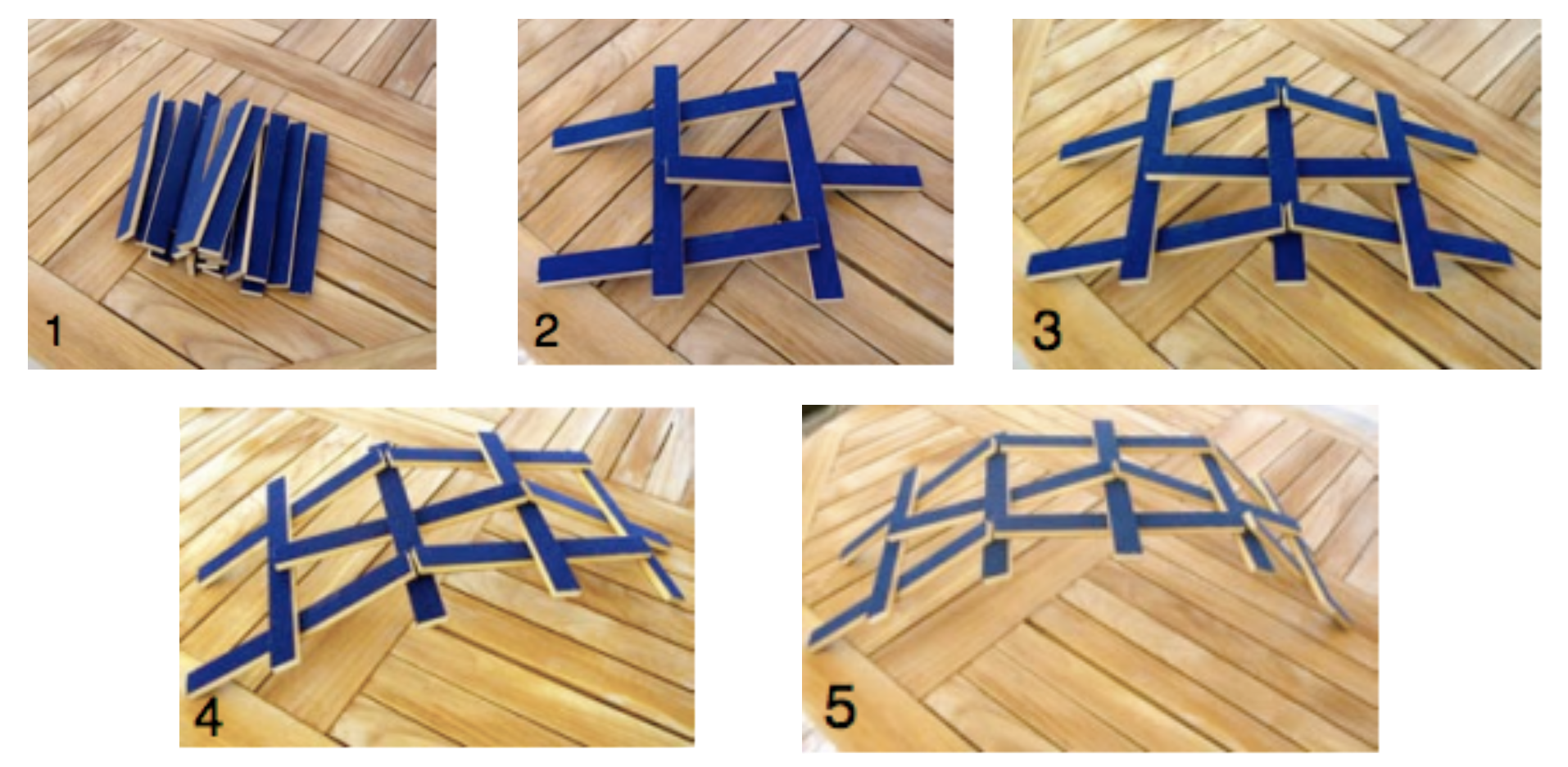
Domes

You can find a more detailed text about Leonardo da Vinci bridges here .
And here’s a film showing how sturdy such constructions can be.